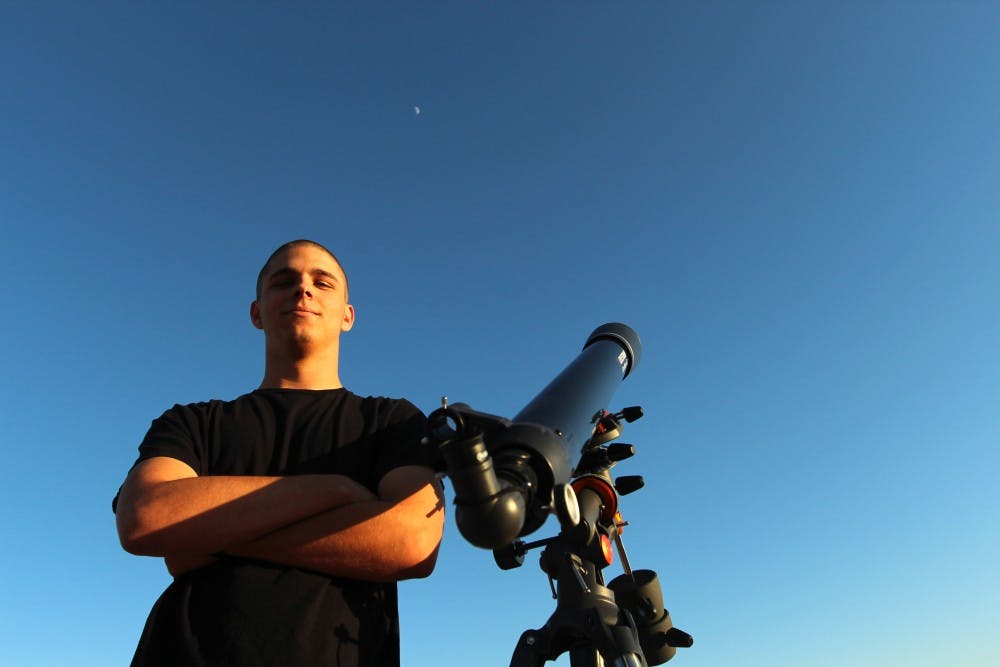Colonies of humans living on Mars sounds like something out of a collection of Ray Bradbury short stories, but for ASU student Sean Mayall, it's a dream job.
Mayall, an environmental technology management sophomore, is preparing to submit his application to the Mars One Project, a nongovernmental organization that plans to send settlers to the red planet in 2023.
"I've always been intrigued by everything out there," Mayall said.
He said he began idly considering the move to Mars about a year ago, when he first heard of the project. Two months ago, when the Mars One Foundation released a call for applicants to join its pilot astronaut selection program, Mayall began thinking more seriously about heading into space.
He has until Aug. 31 to join more than 78,000 people from around the world and submit his application online. Applicants will be honed and receive training through three more rounds, until the Mars One Foundation has between 24 and 40 fully-trained potential settlers. The public will then help choose who will be the first people to live on Mars.
"This is the first step to show that we can colonize another planet," Mayall said. "If we can start colonizing, we may be able to push for more space travel."
Applications are open to anyone, with a small fee based on the GDP of the applicant's country of origin. Applicants just have to be in good physical and mental health and demonstrate resilience, adaptability, curiosity, resourcefulness and the ability to trust others, according to the Mars One Foundation.
The project's directors want to ensure that those selected are capable of living and working together through a lifetime of challenges, said Mars One Chief Medical Officer Norbert Kraft. “Applicants we've received come from a very wide range of personalities, professions and ages," Kraft said. "This is significant, because what we're looking for is not restricted to a particular background." And it will be a lifetime. Those selected for the Mars One Project are not expected to return to Earth, both because of limited technology for a return rocket and because the human body would adapt to Mars' reduced gravity and be unable to reacclimate to Earth's, according to the Mars One Foundation's website.
Settlers will still be able to communicate via video livestream with the friends and family they left behind.
It would be hard to leave his loved ones, Mayall said, adding that he thinks it's more important to do what he can to help mankind by going to Mars.
"There's a greater importance than any one person," he said. "It'll be tough to leave everything I have here, but it'll be more important on a global scale."
Along with having to say goodbye to everything he knows on Earth, Mayall would likely have to leave ASU without his degree if selected. The program would require at least seven years of rigorous training.
However, Mayall isn't worried about that aspect of his trip.
"Anything I do here on Earth is going to be meaningless on a global scale," he said. "I don't have the intelligence to be the next Tesla or Einstein, and anything I can do here could be done by someone else. I could make a difference on Mars."
That is, if he ever gets there. While it's possible that humans will land on Mars in the next 10 years, it's pretty unlikely, said Steve Ruff, a faculty research associate at ASU's Mars Space Flight Facility.
"There's no rocket that's big enough to get humans to Mars," he said.
Even if a rocket capable of such a trip is complete by 2023, there would be lots of risk involved, he said.
"In the next 10 years, we may have a rocket that's almost ready to go, but it would be a colossal risk," he said. "If there's a willingness to take a lot of risk, it may be possible."
Another factor that may contribute to sending humans to Mars is a political standoff, he said. The U.S. was able to send people to the moon within 10 years of President John F. Kennedy's announcement that it would put a man on the moon, but that was at the height of the Cold War. Sending humans to the moon wasn't just done for science, it was backed by a huge political will, money, and national effort.
"I'd love to be proven wrong, but I'm very skeptical that a small organization such as Mars One would be able to do this," Ruff said.
The planned colonization is still 10 years off, and until then, Mars is still just a small bright dot in the sky for Mayall and the other hopeful colonizers.
"Our minds just can't comprehend the vastness of an ever-expanding universe, and the fact that I could be one of the first on another planet is just beautiful," he said.
Reach the managing editor at julia.shumway@asu.edu or follow @JMShumway on Twitter.
Like The State Press on Facebook and follow @statepress on Twitter.




